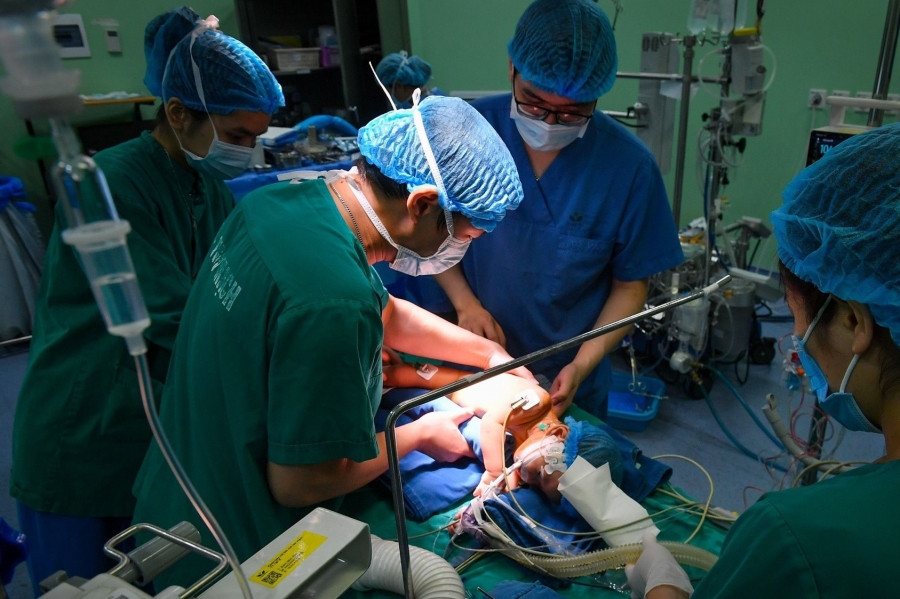Suffering from tetralogy of Fallot, a 10-month-old baby weighing just over 5.5kg became the 700th patient to receive minimally invasive heart surgery through a small incision the length of a finger in the right armpit at the National Children's Hospital.
The surgery was performed by Dr. Nguyen Ly Thinh Truong, Director of the Pediatric Cardiovascular Center, National Children's Hospital (Hanoi) and Professor Yasuhiro Kotani, Deputy Head of the Department of Cardiovascular Surgery, Okayama University Hospital (Japan) on August 7, after 6 hours. Professor Kotani was also the one who transferred this technique to Vietnam 5 years ago.

Minimally invasive heart surgery via the right armpit for a 10-month-old patient, morning of August 7
The child has a congenital heart disease called tetralogy of Fallot, which includes four characteristics: large ventricular septal defect, right ventricular outflow obstruction, pulsatile stenosis, right ventricular hypertrophy, and aortic override. Symptoms include cyanosis, difficulty breathing while eating, poor growth, and especially sudden cyanosis that can cause death at any time.
After 5 years of transfer, the results that doctors in Vietnam have achieved in minimally invasive heart surgery through the armpit have made the Japanese professor "surprised, admired and proud": 700 cases, 100% success rate, no children with serious complications or death.
To date, the youngest patient to receive surgery using this method is only 1.5 months old, and the lightest child weighs only 3.8 kg.
Before 2018, there was only one surgical incision for congenital heart disease patients, which was a mid-chest incision and sternum saw, leaving a large chest scar and a long postoperative period, causing pain for the child after surgery.
After being transferred the minimally invasive surgical technique through the right axillary approach by Japanese experts in 2018, Dr. Truong said that the new incision and special surgical technique made the doctors of the Cardiovascular Center "extremely excited" and had a completely different perspective compared to the mid-axillary approach.
However, if it is not possible to repair all the damage to the child such as the midline incision, the axillary incision will fail. Therefore, not all cases are indicated for surgery by this method.
According to Dr. Nguyen Ly Thinh Truong, to minimize damage to children, doctors have made technical changes. Previously, the incision in the armpit was about 6cm long, now it is reduced to about 4cm. Recovery time and ventilator time are also shortened, helping children reduce pain after surgery better.
For patients, especially teenagers, minimally invasive surgery through the right mid-axillary approach offers high aesthetics, helping them shorten recovery time after surgery and quickly return to normal life, without feeling self-conscious due to the short surgical scar and being completely hidden under the right armpit.
To date, the minimally invasive method is mainly applied to relatively simple lesions, and doctors must carefully consider each case. The diseases indicated for this method are: Ventricular septal defect, atrial septal defect, partial atrioventricular septal defect, right-sided partial pulmonary venous return anomaly, pulmonary valve stenosis or suprapulmonary valve stenosis, and some other abnormalities such as left atrial myxoma, left atrial septum, etc.
According to Vietnamnet